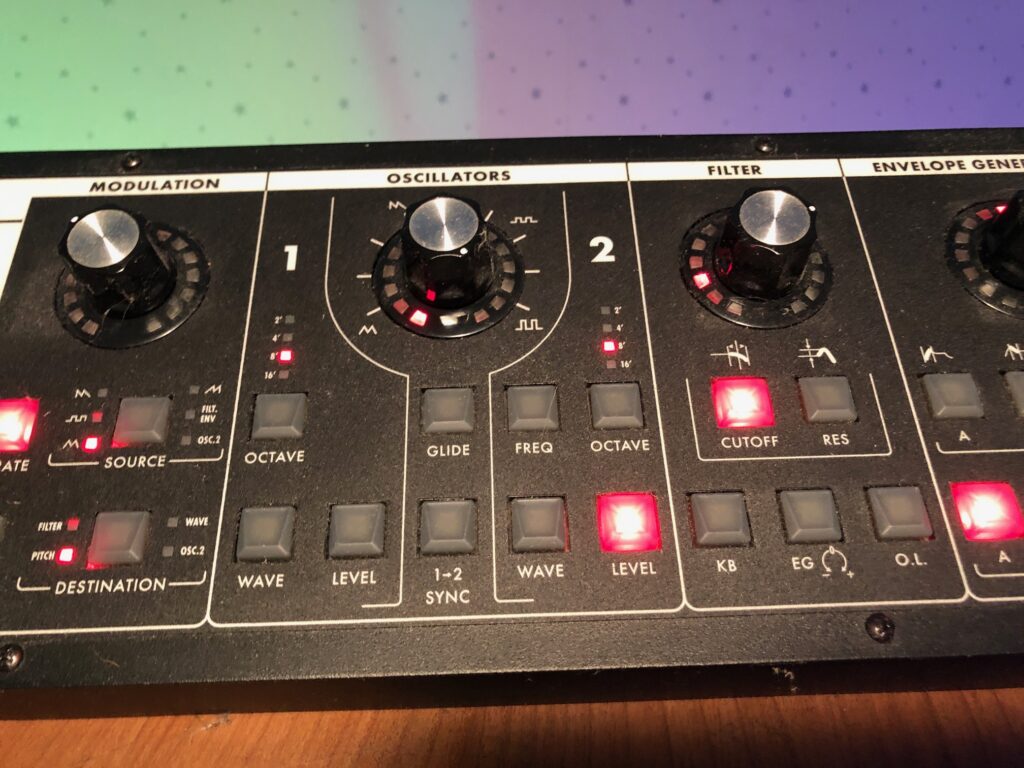In SynthJunky’s first of hopefully many in our Gear Reviews series, we award this maiden voyage to a synth that has been a part of my arsenal for the better part of the last decade, The Moog Slim Phatty.
The Slim Phatty is a compact, desktop module version of the keyboard-equipped Little Phatty, which I also once owned. The Slim Phatty had been introduced shortly after my acquisition of the keyboard-version, and I instantly wished I had waited for it, as I didn’t see much use in the tiny 37-key keyboard, so I always used it as a module to be controlled by my 5-octave MIDI controller anyway.
Inexpensive Mini Moog?
Like myself, many people who consider the Phatty series are chasing the classic Moog sound for a fairer price than we can buy a full Mini-Moog. For many of the bread-and-butter leads and basses, the Phatty has you covered.
Two oscillators supply the characteristic sound sources, but this is not a simple switch between the usual waveform choices, this is a far more versatile variable waveform oscillator that allows you to sweep through the full range of possible waveforms, and everything in between.

Sawtooth leads and basses are spot-on. Square waves are a bit more fickle to dial in with the variable waveform – it has sometimes taken me quite a bit of tweaking to dial in the classic square wave such as what we would hear on the famous ELP “Lucky Man” solo. But once it’s dialed in, it’s quite close.
The filters are classic Moog filters, with all the characteristic warm wooliness and juicy, squelchy resonance. One area where the filter section really shines is the overload (O.L.) feature. This feature alone makes the Phatty a valuable addition to almost any analog rig, being particularly good at evoking modern, aggressive sounds that are a stark contrast to the silky-smooth, warm traditional Moog sounds it provides.
Some Limitations
As I mentioned earlier, many people look to the Phatty as less expensive way to get in the ballpark of a Minimoog, and it does take you part of the way there. It only has two oscillators, but it does have a separate LFO, so you don’t have to sacrifice a sound-generating voice for the sake of modulation. It also does not have a noise-generator. Modulation triggering is limited to modulation wheel on your controller, though a clever synthesist can find a way around this by using a DAW to route various CCs to one or more parameters.
One particular quirk that Slim Phatty owners must adapt to is the warm-up time. Because the Slim’s hardware is so small, it lacks the insulation from outside temperatures the keyboard-version has. So, you want to power up your Slim at least 10-20 minutes before your gig or studio session to avoid having to re-tune it. However, this hasn’t been much of a bother, in a few sessions where I just needed the Slim’s sound in an instant, I simply used the master tune, and adjusted a little later as it warmed up.
Pros:
- Classic Moog oscillators
- Classic Moog filters
- Inexpensive on 2nd hand market
- Reliable, rarely need servicing
- Overload provides a wonderful analog distortion unique to this series suitable for aggressive, modern sounds
- Most-used parameters are instantly accessible on the front-panel.
Cons:
- The classic square wave can be hard to dial in
- Needs some warm-up time
- Some parameters need a bit of deep-diving to access
- LFO modulation only controllable via mod wheel, unless finagled through a DAW
Also of Interest:
Categories: Gear Reviews